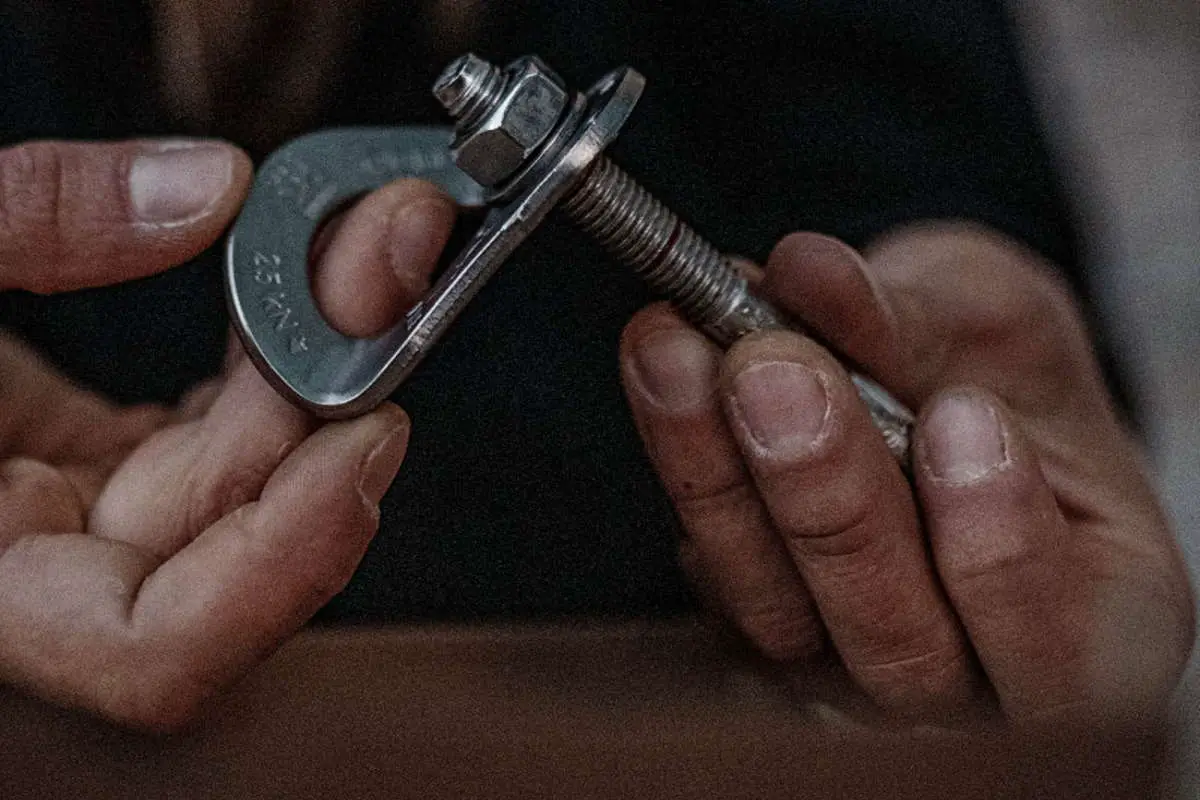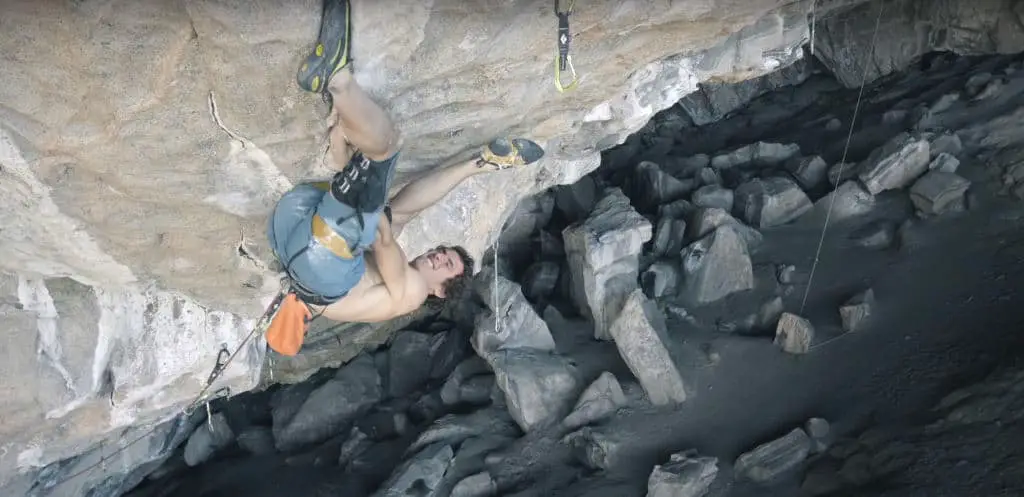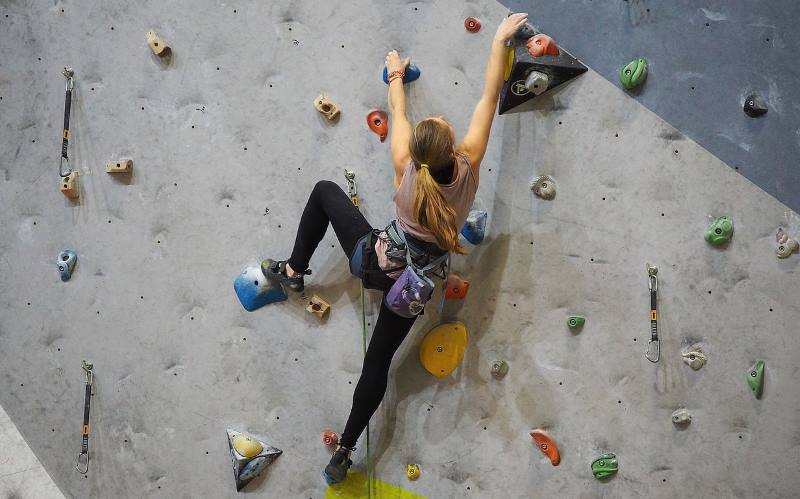We report on lots of first ascents, new routes, or high grade routes getting climbed. Often we’ll use the term flash or flashed when a route is sent. Why use this term at all?
What Does Flash Mean In Climbing?
If you flash a climb it means you climbed it on your first attempt with some information about it before you tried. You can’t fall or hang on the rope but you can get told where holds are, how the sequences go, where to rest e.t.c.
It’s very similar to an onsight but there is a good reason to differentiate between the two.
What’s The Difference Between A Flash And An Onsight?
The difference here is that a flash allows you to know beta or information about the route before your try. An onsight is very strict about not getting any beta. Knowing what you’re up against can be the difference between sending and flailing.
From our onsight article: “climbing onsight means climbing a route ‘clean’ in one go without getting beta or taking a good look at it before trying it“.
At the end of the day yes it’s important to be clear how you sent a route – but the main thing is that you have fun. Most climbers don’t give a toss unless you’re sponsored and not giving the full picture.
See What Does Climbing Onsight Mean?
What Counts As A Climbing Flash?
Essentially a flash in climbing means using any knowledge about the route. That can include as little as a description in a guidebook or as much as on-the-wall coaching move by move. It’s up for debate but too much info should move your climb from an onsight to a flash.
Commonly a group at a crag might share info on the moves for a tricky crux sequence. It’s also common to point out where a hold might be found if it’s not in sight, or what holds to ignore. Where to take a strategic rest or where you’ll find a hidden kneebar is beta gold.
Other things that can help include watching a video of the route, rappelling down, brushing and ticking holds, watching someone else climb it before you, or reading UKC logbooks (…yes I am specifically calling you out).
At the professional level it gets a bit stricter. Adam Ondra counts watching videos of multi-pitch Yosemite classics years before his attempts as counting towards a flash. Basically knowing or seeing any more than what you can see from the ground means it’s a flash attempt.
What Is A Flash In Bouldering?
Because of the nature of climbing a boulder it’s common to call a successful first attempt a flash rather than an onsight. When you’re sizing up a boulder it can be very easy to see every single hold – depending on the size.
If you’re trying a sport climbing route the way up is normally fairly obvious. Just head upwards and keep an eye out for the bolts. With bouldering you might have a bunch of routes with slight variations over the same side of the boulder.
Often finding the boulder is the hardest part of the day, so you’ll do a lot of spying out different similar looking rocks until you see the right one. You also tend to have to clean off the holds, figure out the movement, and actually find where to top out. By that point you’ve basically seen the full monty.
As a result boulderers don’t really bother with the onsight term and tend to use flash for a successful route on a first try.
Climbing Etiquette
Do everyone a favor and don’t spray beta. Ask before you give out advice or friendly tip and assume the person might not want to know – even if they’re being polite. That advice could turn on onsight to a flash.
Figuring out a route by yourself is a big part of climbing both indoors and out. Getting to say you did a notorious route onsight is a fun little ego boost! Having it ruined by a big of unwanted advice (which of course you’re going to use) can be a bit deflating.
Be careful to let others know if you don’t want information too. Most people want others to succeed and might shout out something they think could help, without meaning to be rude. A quick “No clues please, even if I get Elvis leg” can solve this.
Will Reading A Guidebook Ruin My Onsight?
You’ll notice some guidebooks tend be very sparse with information on routes. The idea is to give just enough that you’ll get the right route. You don’t want to stray off course early and ruin the onsight but you don’t need much more than that.
Bouldering guidebooks tend to have very specific beta. Especially so where there are multiple routes on a rock. The difference between a sit start off the floor or on stacked pads matters, as do specific holds that might be “out” and not allowed.
What Happens If You Fall On A Flash Attempt?
Then you started redpointing the route. Any fall or rest that weights the rope means you’ve lost the flash attempt.
More Climbing Jargon Explained
– What Is A Redpoint In Climbing?
– What Is A Runout In Climbing?
– What Is A Sandbag In Climbing?
Can You Onsight On Top Rope?
Most climbers would say that the terms flash, onsight, and redpoint are specifically for lead climbing. Don’t let this get you down though. Climbing a route first try definitely takes more than a repeat attempt and you should be proud.
Can You Flash A Route Indoors?
Yes, climbing a route first time indoors without falling or resting on the rope counts as a flash. It can’t really be an onsight because the holds are all very obvious so it’s not hard to figure out the crux with a few seconds look.
What Is The Hardest Climbing Flash?
Of course it would be Adam Ondra. In February 2018 Ondra climbed Super Crackinette in St Leger, France for the first 9a+ / 5.15a flash. He loves making history so he’d been thinking about this route for some time.
The first part of the route was bolted by Quentin Chastagnier who was around to give Adam detailed info. He realyed the crux, the specific holds to use, as well as the general style. Adam also belayed Quention for a few attempts.
On the route he didn’t want beta but says he “knew it completely off by heart” before the try. At the same time, he actually decided on alternative beta before the attempt and made it work first time!
Read our full article – Who Is Adam Ondra?
What Is The Hardest Bouldering Flash?
Witness The Fitness is an 8C / V15 boulder originally put up by Chris Sharma. In January of 2018 Jakob Schubert climbed it first try with full beta. He does say that he felt the route is “actually more of a low end 8B+”.
There have been quite a few 8B+ / V14 flashes and no confirmed 8C / V15 flashes. Daniel Woods also climbed Entlinge, originally graded 8B+/8C but he downgraded to 8B+.



